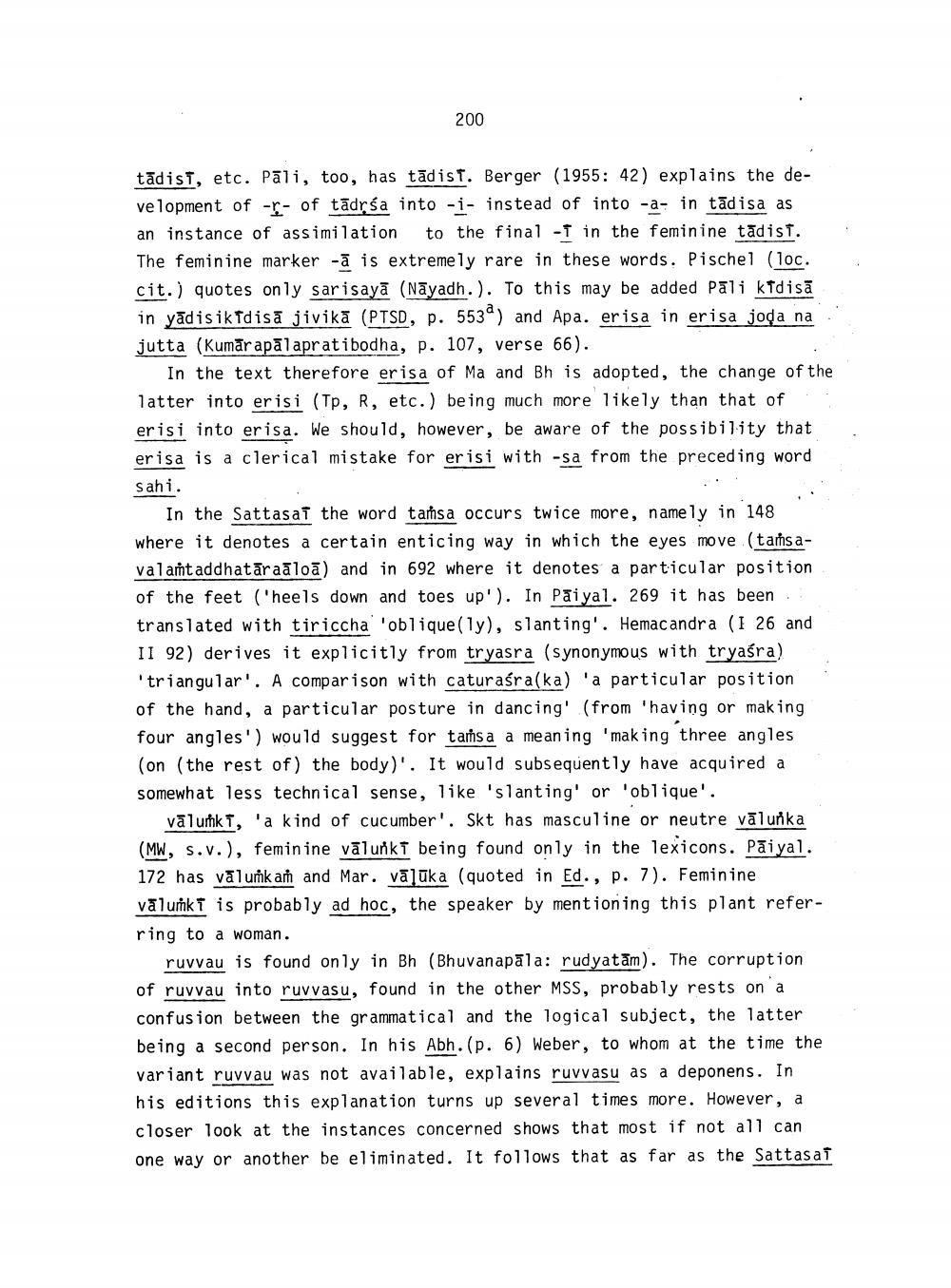________________
200
tādist, etc. Pāli, too, has tādist. Berger (1955: 42) explains the development of -r- of tādrśa into -i- instead of into -a- in tādisa as an instance of assimilation to the final -I in the feminine tādist. The feminine marker -ā is extremely rare in these words. Pischel (loc. cit.) quotes only sarisayā (Nāyadh.). To this may be added Pāli ktdisā in yādisikTdisā jivikā (PTSD, p. 553C) and Apa. erisa in erisa joda na jutta (Kumār apālapratibodha, p. 107, verse 66).
In the text therefore erisa of Ma and Bh is adopted, the change of the latter into erisi (TP, R, etc.) being much more likely than that of erisi into erisa. We should, however, be aware of the possibility that erisa is a clerical mistake for erisi with -sa from the preceding word sahi.
In the Sattasas the word tassa occurs twice more, namely in 148 where it denotes a certain enticing way in which the eyes move (tasavalaṁt addhatāraāloā) and in 692 where it denotes a particular position of the feet (heels down and toes up'). In Paiyal. 269 it has been translated with tiriccha 'oblique(ly), slanting'. Hemacandra (1 26 and II 92) derives it explicitly from tryasra (synonymous with tryasra) 'triangular'. A comparison with caturaśra(ka) 'a particular position of the hand, a particular posture in dancing' (from 'having or making four angles') would suggest for tamsa a meaning 'making three angles (on (the rest of) the body)'. It would subsequently have acquired a somewhat less technical sense, like 'slanting' or 'oblique'.
vāluhk T, 'a kind of cucumber'. Skt has masculine or neutre valurka (MW, s.v.), feminine vālunkt being found only in the lexicons. Pāiyal. 172 has valuñk aṁ and Mar. vālūka (quoted in Ed., p. 7). Feminine vāluikt is probably ad hoc, the speaker by mentioning this plant referring to a woman.
ruvvau is found only in Bh (Bhuvanapāla: rudyatām). The corruption of ruvvau into ruvvasu, found in the other MSS, probably rests on a confusion between the grammatical and the logical subject, the latter being a second person. In his Abh.(p. 6) Weber, to whom at the time the variant ruvvau was not available, explains ruvvasu as a deponens. In his editions this explanation turns up several times more. However, a closer look at the instances concerned shows that most if not all can one way or another be eliminated. It follows that as far as the Sattasaf




